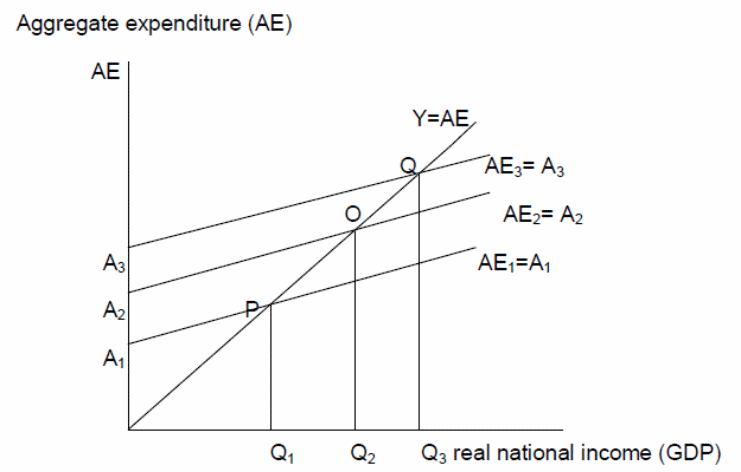Western Australia economic growth revised down
The Sydney Herald Newspaper of January 11, 2012, reports that the projected economic growth rate for Western Australia has been revised down ward even though the growth is still impressive and unemployment levels are expected to decline. According to the chamber of commerce and industry, the economy will grow by 5.25 per cent in 2011/2012, which is a one per cent decline from the forecast made in September of 2011. Overall, the unemployment levels are expected to fall from 4.3 per cent to 3.75 per cent by June 2013 (Morning Herald News Paper, 2012).
GDP is an important measure of a countrys overall economic performance. It serves as a comprehensive measure for weighing market activity and therefore facilitates productivity measurement, implementation of monetary policy and projection of tax revenues (Bureau of Economic Analysis, 2011). The government can adopt this information to help it in creating a conducive business environment through the formulation of sound macroeconomic policies to ensure that the growth projections do not fall further and that unemployment rates are reduced as per the projections.
The implications for equilibrium GDP and the level of savings of an increase in the savings function in Australia

where:
- AE: aggregate expenditure
- Q: national GDP
- A: aggregate demand= C+I+G+ (X-IM), where C, G, and I consumption, government expenditure and investment, respectively. X-IM is the net exports.
The figure above indicates that the economy is initially at equilibrium point O. At this point, Australia’s GDP equals the total spending in the economy. When the citizens reduce their volume of spending, there will be excess output as the real GDP produced within the economy (Q) will exceed the expenditure in the economy. Because of the excess supply, producers will be forced to reduce their inventories so as to equate the level of output to the aggregate expenditure.
The drop in exogenously determined expenditure (C+I+G) results in the aggregate supply curve shifting inwards from the original A2 to A1. In addition, the economys real GDP will fall from Q2 to Q1. Given the fact income is a function of savings and consumption when aggregate spending reduces in the current period, then it means that the people are saving.
What is saved is what is invested, and therefore reduced consumption leads to increased private investments (Mankiw, 2002). Equally, when individuals are repaying their loans (debts), it means the commercial banks are lending out money to private investors. As a result, the increased private investment generates more disposable income for the masses leading to an upward shift in the aggregate expenditure curve from the initial A2 to A3. This, in turn, improves the overall GDP, which increases from Q2 to Q3.
Does no recession in Australia mean no business cycles?
Generally, economic cycles are characterized by booms and recessions. These cycles are a result of an economy’s productivity levels over time. During a recession, economic activity in the country is very low, with low incomes, low investments and high unemployment rates (Barro, 2008). Even though Australia has not suffered a recession for two decades, it does not imply a break in the business cycles but rather indicate sound macroeconomic management by the central bank.
Like in any other country, variables that give rise to inflationary and recessionary pressures are continuously fluctuating and therefore the need for corrective fiscal corrective action in a timely manner. The current inflationary pressures within the Australian economy will ultimately come to an end and the economy will suffer a recession as it goes back to its equilibrium. According to the Australian Bureau of Statistics (2011), there were significant increases in price in the last quarter of 2011. Notable were the consumer price increase in electricity at 7.8 percent, water and sewage at 8.6 percent and travel and accommodation at 5.1 percent. This indicates that economic cycles are still alive in Australia.
How other parts of Australian economy are affected by the resources boom
The current resource boom appears to have both advantages and disadvantages. On the negative side, Australia is suffering from elements of de-industrialization and displacement. Equally, the gap between the rich and the poor is continuously widening with more resources flowing to the corporate elites. In the context of global warming, the resource boom threatens the viability of other sectors of the economy (Goodman & Worth, 2010). On the positive side, the sector employs approximately 2 percent of the total population (2011) while providing market to inputs from other sectors such as manufacturing, oil and electricity. This has led to improved GDP growth.
References
Australian Bureau of Statistics. (2011). Australian bureau of statistics. Web.
Barro, R. (2008). Macroeconomics. New York, NY: Cengage Learning.
Bureau of Economic Analysis. (2011). U.S. Department of Commerce. Web.
Goodman, J. & Worth, D. (2010). The minerals boom and Australia s resource curse. Web.